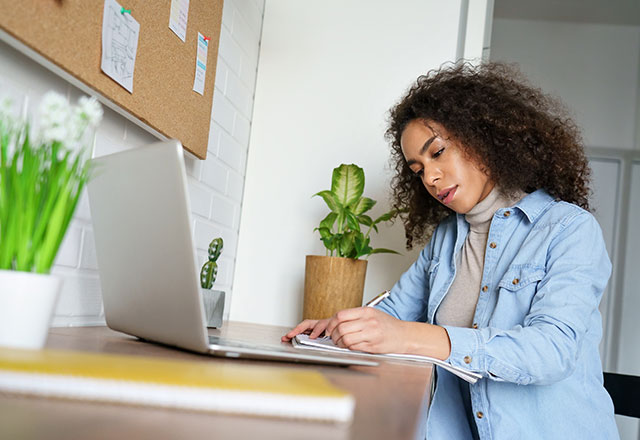
Due to COVID-19, educators have been tasked with finding new ways to continue teaching their students virtually with little time to prepare. In particular, since the start of the school closures, federal requirements for Individualized Education Programs (IEP) compliance have changed. The Department of Education understands that some IEP services may not be possible or appropriate to administer virtually and offer flexibility in meeting all IEP requirements. Under otherwise normal circumstances, an IEP serves as a child’s roadmap for their learning and well-being at school. It contains a comprehensive outline for a child’s experience at school including participation in assessments, socialization with peers, special needs and services, and measurement of progress. All these components are involved in a child’s academic, behavioral, or social long and short-term goals that are accomplished with the child’s IEP team which may include the child’s parents or guardians, teachers, special education teachers, and other specialists such as a Speech-Language Pathologist (SLP).
We had the opportunity to speak with a Special Education teacher, Mrs. S, to learn about her adjustment to distance learning. Mrs. S works with 5th and 6th grade students with mild and moderate disabilities including students with Autism Spectrum Disorder, processing disorders, and physical disabilities. Her work typically relies heavily on in-person, individualized attention to provide her students with multiple modes of communication such as visual, auditory, and tactile options. In our conversations, Mrs. S reflected on changes in her approach, what strategies worked best for her students, and how she is preparing for the upcoming school year.
| Mrs. S recognized that not all students had technology at home to reliably connect with their educational materials and prepared for disparities in engagement. | Mrs. S continued to use Google Classroom, but found that her students were connecting using different types of devices such as phones, tablets, and laptops, which impacted their ability to access the resources and assignments she posted.
Mrs. S was able to hold some IEP meetings with the principal, general education teachers, and SLP as well as with parents over Zoom. She said many parents were grateful for these opportunities to continue supporting their children’s needs. |
| It was difficult to provide hands-on activities for her students, but Mrs. S supported her students with the following online resources:
Mrs. S also identified a need for an online program to practice rote calculation skills, but did not find one that worked ideally for her students. |
Mrs. S used Zoom to do live instruction with her students by leveling them into smaller groups based on ability. For reading, she met separately with three groups, and for math, five groups. During the meetings, she used the breakout room feature to create even smaller instructional groups with a paraeducator or SLP.
Without individual and personal instruction, Mrs. S found it difficult to achieve students’ writing goals, but was able to get some students to practice daily writing in a Google Doc. However, students needed access to keyboards to practice their writing and submit assignments virtually, which was not available for all students. |
| At the beginning of closures, Mrs. S chose to focus on her students’ academic goals as her work transitioned to virtual meetings. | Many of Mrs. S’s students had behavioral goals related to staying on task and paying attention. Mrs. S was able to practice redirections over Zoom using verbal prompts to guide students back to their work. Unfortunately, she was not able to address other behavioral goals, espe-cially those related to socializing and peer me-diation, while students remained at home. |
Student and teacher well-being
Distance learning for teachers who are responsible for both a student’s academic and emotional well-being can be especially difficult. Because of varied caregiver engagement and access to technology, Mrs. S had very limited contact with about one third of her students. To help students who did engage routinely, Mrs. S always started her lessons with a general check-in and took time to answer their questions and comments about COVID-19 and the school closures. She said it was useful for her students to voice their concerns and have a space to talk with other kids.
To manage her own stress, Mrs. S embraced the benefits of working from home. She enjoyed the ease of stepping outside, taking walks, or riding her bike in between calls or sending emails, and found that her new work environment allowed her to intentionally take time to process her day and feel more relaxed. Mrs. S also felt supported by her colleagues during this time and appreciated their texts, emails, and weekly Zoom social hours.
Recommendations when planning for future online learning and behavioral support:
- Take this time to brush up on online tools. Take webinars and watch YouTube videos to explore what will work for you and your students.
- Reach out to your colleagues! Share what you know and ask for help, everyone is looking for ways to help their students.
- Parents and guardians play a very big role in distance learning. Take this opportunity to get to know them better and learn what will work for their family creating open lines of communication via phone, email or Zoom. Make sure they receive guidance about the tools their students are using and understand the ways they can help their child learn.
- Stay up to date on the requirements of special education providers if the pandemic persists. This FAQ document from the Department of Education can also offer additional guidance.
See our previous blog post, “Educator reflections on distance learning during COVID-19,” where we spoke with a high school and middle school teacher about adjustment to distance learning. Our COVID-19 Resources page also has tons of resources to help teachers support students during the pandemic.
Topics: Elementary school Middle school/Junior high school Social-emotional learning
Tags: COVID-19 Distance learning
